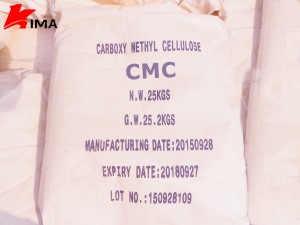Is cellulose gum harmful to humans?
Cellulose gum, also known as carboxymethyl cellulose (CMC), is a commonly used food additive that is used as a thickener, stabilizer, and emulsifier in a wide range of processed foods, cosmetics, and pharmaceutical products. It is derived from cellulose, a natural polymer that makes up the cell walls of plants, and is chemically modified to create the gum-like substance.
There have been concerns about the safety of cellulose gum in recent years, with some studies suggesting that it may have harmful effects on human health. In this article, we will explore the research on cellulose gum and its potential risks to human health.
Toxicity Studies on Cellulose Gum
There have been several studies on the toxicity of cellulose gum, both in animals and in humans. The results of these studies have been mixed, with some suggesting that cellulose gum is safe for consumption, while others have raised concerns about its potential risks.
One study published in the Journal of Food Science and Technology in 2015 found that cellulose gum was safe for consumption in rats, even at high doses. The study found that rats fed diets containing up to 5% cellulose gum for 90 days showed no signs of toxicity or adverse health effects.
Another study published in the Journal of Toxicology and Environmental Health in 2017 evaluated the toxicity of cellulose gum in rats and found no evidence of toxicity or adverse effects, even at doses up to 5% of the animals’ diets.
However, other studies have raised concerns about the safety of cellulose gum. A study published in the Journal of Occupational Health in 2005 found that cellulose gum inhalation caused respiratory symptoms in workers at a cellulose gum manufacturing facility. The study suggested that inhalation of cellulose gum may cause respiratory irritation and inflammation, and recommended that workers be protected from exposure.
A study published in the International Journal of Toxicology in 2010 found that cellulose gum was genotoxic in human lymphocytes, which are white blood cells that play a key role in the immune system. The study found that exposure to high concentrations of cellulose gum caused DNA damage and increased the frequency of chromosomal abnormalities in the lymphocytes.
Another study published in the Journal of Applied Toxicology in 2012 found that cellulose gum was toxic to human liver cells in vitro, causing cell death and other cellular changes.
Overall, the evidence on the toxicity of cellulose gum is mixed. While some studies have found no evidence of toxicity or adverse health effects, others have raised concerns about its potential risks, particularly with respect to respiratory and genetic effects.
Potential Health Risks of Cellulose Gum
While the evidence on the toxicity of cellulose gum is mixed, there are several potential health risks associated with its use in food and other products.
One potential risk is the potential for respiratory irritation and inflammation, particularly in workers who are exposed to high levels of cellulose gum dust. Workers in industries such as papermaking and food processing may be at risk of exposure to high levels of cellulose gum dust, which can cause respiratory symptoms such as coughing, wheezing, and shortness of breath.
Another potential risk of cellulose gum is its potential to cause DNA damage and chromosomal abnormalities, as suggested by the study mentioned above. DNA damage and chromosomal abnormalities can increase the risk of cancer and other genetic diseases.
In addition, some studies have suggested that cellulose gum may interfere with the absorption of nutrients in the digestive tract, particularly minerals such as calcium, iron, and zinc. This could potentially lead to deficiencies of these nutrients and related health problems.

Post time: Feb-27-2023
